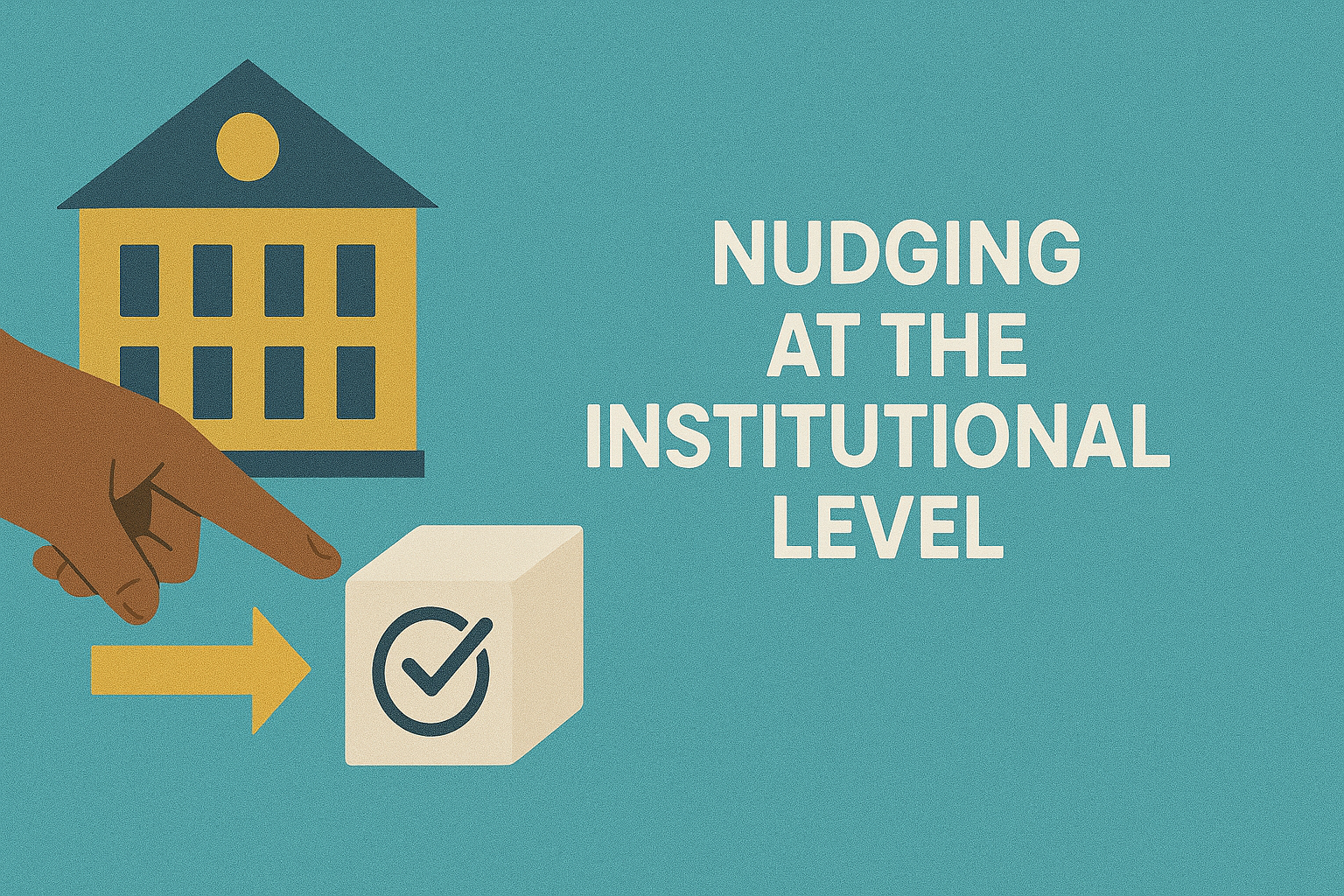
Inclusive digital teaching is not just an individual responsibility, it’s a shared effort that can be strengthened (or weakened) by the structures, cultures, and relationships around us. This unit explores how nudging strategies can be embedded at the institutional and peer-to-peer levels to support lasting inclusive practices.
You’ll learn how to incorporate inclusive prompts into departmental templates and review processes, how to nudge colleagues toward inclusive behaviours, and how to foster a shared culture of responsibility for accessibility and inclusion.
Inclusive pedagogy becomes more sustainable when it’s embedded not only in your teaching, but also in your environment.
Institutions often create templates for course syllabi, lesson plans, LMS pages, or assessment guidelines. These templates are prime opportunities for embedding nudges, small prompts that guide educators toward inclusive choices as they work.
Examples of inclusive nudges in institutional templates:
These embedded cues don’t force action, they gently steer educators toward accessibility and inclusion as part of routine planning.
Similarly, quality review processes (e.g., module evaluations, peer reviews, annual updates) can include nudges such as:
By formalising these prompts, institutions signal that inclusion is not optional, it’s expected.
Peer influence is a powerful lever for change. Educators are more likely to try new practices when they see trusted colleagues doing the same. Nudging can be used informally, through dialogue, modelling, and shared resources, to normalise inclusive practices in your teaching team or department.
Examples of peer nudging:
These small acts encourage others to reflect on their own practice, and they help build a culture where inclusion is visible, shared, and supported.
Inclusion is strongest when it is treated not as a task for a few individuals, but as a shared value across an institution. Nudging can help reinforce this shared ownership.
Consider nudges that remind:
For example:
In this way, nudging works horizontally (peer-to-peer) and vertically (across systems), embedding inclusive thinking into every level of the educational experience.
Even if your institution isn’t fully supportive yet, you can use self-nudging to advocate for inclusion from within.
Try these strategies:
Change doesn’t have to start top-down. Nudging can make institutional improvement feel manageable and collective, even when progress is slow.
Watch the following video which explores practical ways educators can design learning environments where every student feels seen, supported, and able to participate fully.
Inclusive practice becomes more sustainable when supported at multiple levels. You don’t have to change your institution alone, but your small nudges can help shape the norms, tools, and expectations that influence others.
The final activity will help you apply a peer-level or institutional nudge to your own context.
Objective:
To encourage peer dialogue and reflection around inclusive teaching strategies.
Instructions:
(1) Choose one inclusive practice you’ve used or improved during this module (e.g., flexible participation, accessible templates, feedback prompts).
(2) Share it with a colleague, either informally (chat, email, meeting) or through a more structured format (e.g., teaching team discussion, internal workshop).
(3) Ask one of the following questions:
(4) Log the response or simply reflect on how the conversation went.
Optional:
Set a follow-up nudge, such as:
Before closing, take a moment to reflect on what you’ve learned and how your own practice has evolved.